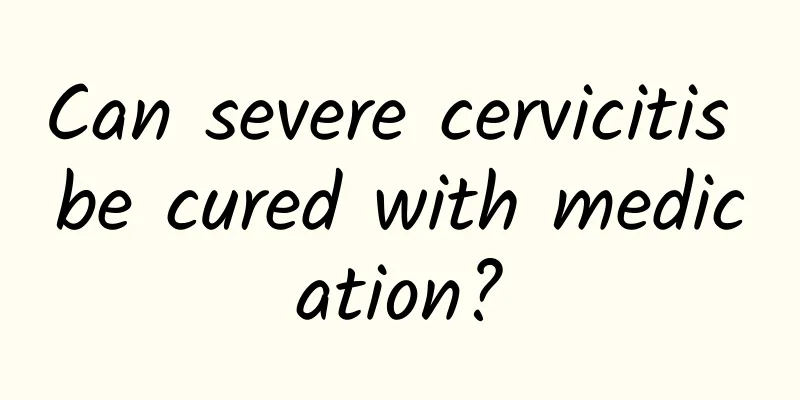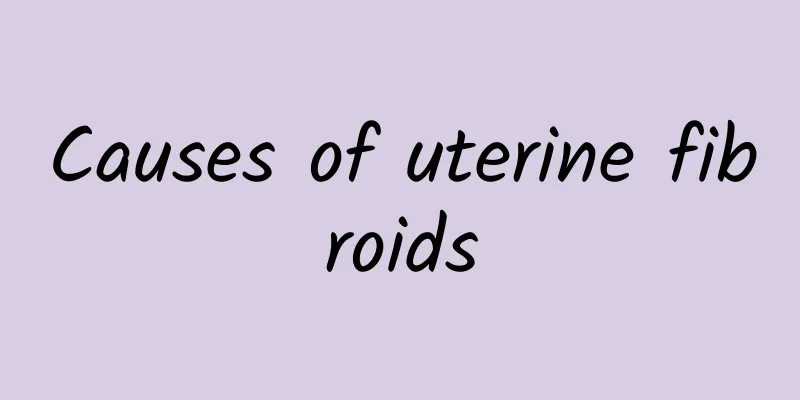Can severe cervicitis be cured with medication?

|
Severe cervicitis can be relieved to a certain extent through drug treatment, but it is often not completely cured and needs to be combined with other therapies such as physical therapy or surgery for comprehensive treatment. Drug treatment usually includes antibiotics, antiviral drugs and local medications. Choosing the right treatment plan based on the specific cause is the key. 1) Analysis of the causes of severe cervicitis Severe cervicitis is often the result of chronic cervicitis that is not treated in time or repeated infections. The main causes include: -Infection: Bacterial (such as streptococcus or staphylococcus) and viral (such as human papillomavirus (HPV)) infections are the main causes. Long-term exposure of the cervix to an environment infected by pathogens may lead to aggravation of chronic inflammation. -Environmental factors: Frequent excessive vaginal cleaning or irregular sexual life may damage the natural barrier of the vagina and increase the risk of cervical infection. - Physiological factors: such as low immunity and changes in hormone levels, which may affect the defense function of the cervix and aggravate inflammation. 2) Applicability and limitations of drug treatment Drug treatment is mainly used to relieve infection and control inflammation. It includes the following options: - Oral antibiotics: For bacterial infections, you can choose amoxicillin, levofloxacin or doxycycline depending on the type of pathogen. -Antiviral drugs: If accompanied by human papillomavirus infection, interferon preparations may be considered, but they must be used in a standardized manner under the guidance of a doctor. - Local medications: Vaginal suppositories (such as metronidazole vaginal tablets, clotrimazole ointment) are more targeted at reducing local inflammation, but they are generally of limited significance for more severe cervicitis. Although drugs are effective in controlling symptoms, in severe cases, the tissue lesions are often deep and it is difficult for drugs to completely eradicate the lesions. 3) Other adjuvant treatments In order to completely eliminate the lesions, physical therapy or surgery is often required: -Physical therapy: Such as laser therapy, cryotherapy or electrothermal therapy can help repair damaged cervical tissue and is suitable for patients who do not respond well to drug treatment. -Surgical treatment: such as cervical conization, which is particularly suitable for patients with severe inflammation or even pathological changes. It can effectively remove necrotic tissue and prevent the occurrence of cervical cancer. -Daily care: It is extremely important to make appropriate lifestyle adjustments during treatment, such as good personal hygiene habits and avoiding contact of irritating chemicals with the cervix. Medication is one of the foundations of treating severe cervicitis, but it is often not the only effective solution. Choosing a comprehensive treatment plan under the guidance of a doctor and doing regular follow-up examinations are necessary steps to deal with the worsening of cervicitis, which helps to improve the effectiveness of treatment and avoid the development of subsequent complications. |
<<: Left Bartholin's gland cyst
>>: What is the prevention of cervical hypertrophy?
Recommend
Can abdominal ultrasound detect ectopic pregnancy?
Can abdominal ultrasound detect ectopic pregnancy...
Causes of cervical hypertrophy
Cervical hypertrophy is a type of chronic cervici...
The early symptoms of cervical erosion cannot be ignored
Many women are troubled by cervical erosion for a...
How to prevent irregular menstruation?
How to prevent irregular menstruation? To prevent...
What are the daily preventive measures for threatened abortion?
What are the daily preventive measures for threat...
Risks associated with hyperprolactinemia
Hyperprolactinemia is a very common disease and a...
What are the reasons for delayed menstruation? Most of them are caused by these 3 factors
Delayed menstruation is a common menstrual disord...
Will uterine fibroids eat blood?
Uterine fibroids may cause excessive blood loss, ...
The causes of endometrial tuberculosis should be understood
Endometrial tuberculosis can cause infertility in...
What is the reason for blood clots during menstruation?
The presence of blood clots during menstruation i...
3-day detox diet to create a good figure before the New Year
The Lunar New Year is approaching, and many relat...
shock! A high school girl stepped on the flywheel for 10 minutes but couldn't stand up! Rhabdomyolysis may lead to acute renal failure
If you suddenly overload yourself with heavy weig...
Eating indiscriminately will cause your blood sugar, blood pressure and cholesterol to go out of control! Nutritionist: Seven-day sugar-reducing and muscle-building meals to get rid of obesity, exercise without anxiety
During this period, everyone stayed at home for e...
How can a woman with a small belly lose weight during menopause? Do this to increase metabolism and get rid of belly fat
"Strange! I obviously don't eat much, wh...
What is the reason for frequent delay of menstruation?
For women of childbearing age, regardless of age ...









